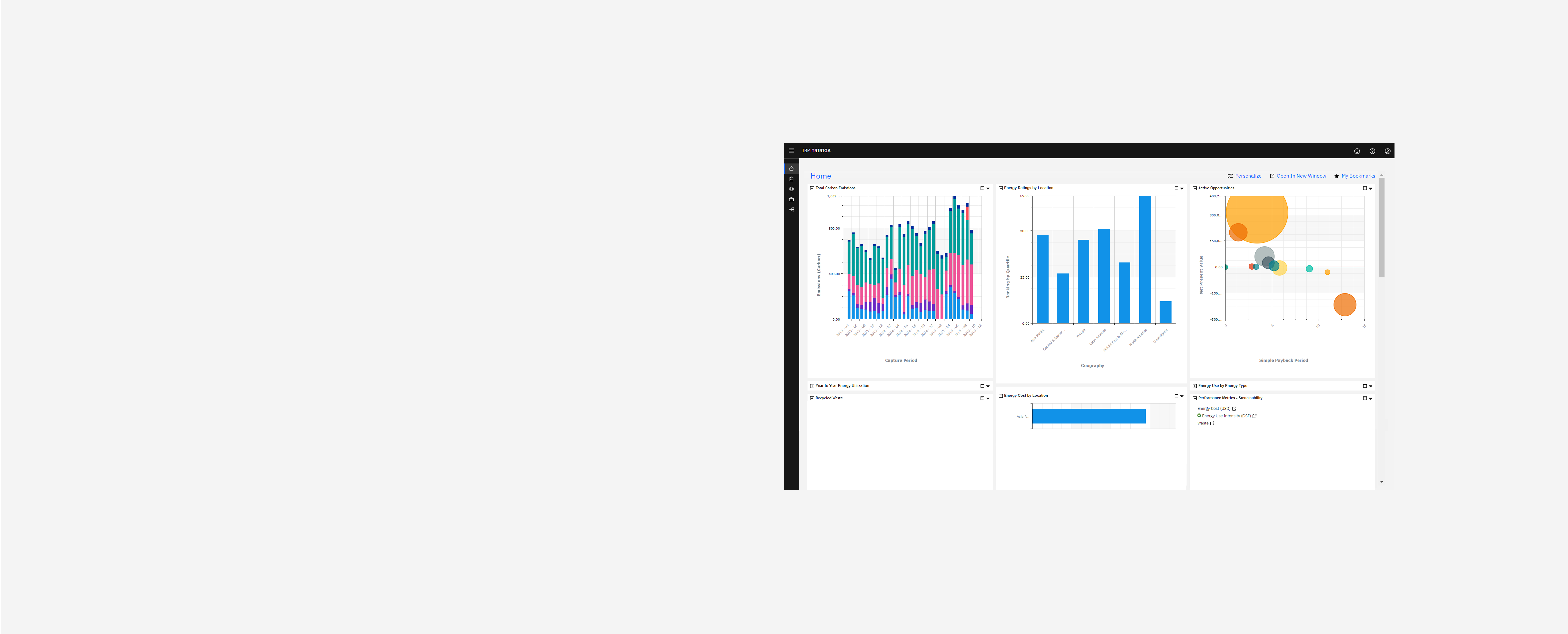
Manage buildings to encourage eco-friendly practices and office sustainability through the real estate lifecycle. With IBM® TRIRIGA®, an integrated workplace management solution (IWMS), you can:
- Include sustainability efforts criteria in space acquisition
- Prioritize sustainability plan in construction and renovation projects
- Enable energy efficiency with green buildings and leases
- Integrate portfolio data to help waste reduction efforts
- Reach carbon footprint goals with space optimization
- Extend asset life with sustainable practices through improved maintenance and assessment
- Leverage AI-powered monitoring to visualize and manage IoT data to help improve sustainability
Discover how you can optimize your real estate and facilities management operations.
Take advantage of a comprehensive environmental data repository for assets, facilities, and operations.
Unlock 11-22% of building energy consumption within office buildings by using less energy with green leases.
Use sustainable business practices to incorporate standard ESG and SLA objectives and terms into portfolio decision assessments.
Reach carbon footprint goals with space optimization. Space footprint is related to energy consumption.
Optimize operations through digital transformation of maintenance processes with system and component updates from service providers.
Combat climate change by identifying planned capital projects for the greatest opportunities to target sustainability transformation.